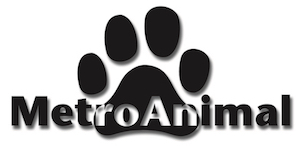|
Most dogs will enjoy having a canine companion in the home.
Here are some suggestions for making the introduction of a
new dog a smooth process.
- In choosing a new dog, try to match your dog's
personality and temperament, as well as your family's
lifestyle. If your resident dog is a lap dog, he/she might
not welcome an active terrier or herding breed.
For example, a Mastiff might inadvertently injure a
Chihuahua.
- Both dogs should be spayed or neutered.
- If your dog has any behavioral problems, you should
resolve those before bringing in a second dog. If your
dog isn't completely housetrained or barks all the time,
you'll soon have two dogs with that problem. There are
a few exceptions, such as a Greyhound suffering from
separation anxiety from being alone for the first time
in its life. This dog may actually do better if you
bring in a second Greyhound.
- All dogs should be obedience-trained, but this will be
more important when bringing in a second dog. If your
dog needs a refresher course, do that first. Obedience
training is also a good way to bond with your new dog.
- If at all possible, have the new dog checked by your
own vet before bringing him into your home. Be sure
he won't be bringing in diseases or parasites.
- If you can have the new dog bathed before bringing
him in, he will smell less threatening to your dog.
- Give both dogs some exercise (separately) before
the introduction, so that they will be a bit tired
and more relaxed.
- Introduce the dogs on neutral territory � in a park,
for example � not in your home. This is very important.
If you bring the new dog directly into your home,
your dog may feel that he or his territory is
threatened, and may react defensively or aggressively.
- Keep both dogs on a leash, even if they are in an
enclosed space, to give you control if one becomes
aggressive. (You hold the resident dog's leash � have a
friend hold the other.)
- Be careful not to telegraph to your dog any
nervousness you may feel � the leash is a transmitter.
Keep a positive attitude and speak calmly. Avoid
high-pitched, rapid-fire "reassuring" words and anxious
petting, which we construe as calming, but dogs
hear � rightly so - as anxiety-ridden.
- Make the experience pleasant � give treats, such as
bits of deli chicken or hot dog. Be careful, however,
only to reward good behavior. Do not use treats to
distract from a problem, and be sure you are not
inadvertently rewarding aggression or bad behavior.
If both dogs sit without growling, give a treat -
within three seconds. Timing, and an immediate
connection to the good behavior, are crucial to make
the dog remember and understand what behavior is
desired and is being rewarded.
- Remember that dogs are hierarchical. One will be
dominant. This is usually the resident dog, but if it
is not, do not try to reverse the order they
establish because you feel sorry for your dog � that
will simply prolong the conflict. A submissive dog
is not an unhappy dog � some dogs greatly prefer to
let someone else (human or canine) be in charge.
- If the dogs get into a tussle, as long as neither
one is getting injured, do not interfere. (If you
break up the conflict too soon, they may bring more
of the unresolved tension to the next encounter.)
- When the conflict ends, be sure to give attention
first to the winner. This will reinforce the dominance
just established. Temporarily ignore the loser. Once
the hierarchy is established, fighting should stop.
- Always be sure that the dominant dog is first to be
greeted, fed, petted, given treats, and even first
to have his collar/lead put on.
- If either dog has an accident in the house, do not
comment, yell, or punish. Simply clean it up, using
an enzymatic cleaner. (Do not use any product
containing ammonia, which smells like urine.) Again,
this should stop once the hierarchy is established.
Give the new dog extra opportunities to relieve himself
outside until he becomes accustomed to your routine
and schedule. If either dog starts to urine-mark
inside the house, consider consulting a behaviorist.
- Be sure to give your resident dog the same amount of
affection he received in the past. Don't give him a
reason to be jealous. If he got a walk or a play
session at a particular time of day, be sure to
continue that. The less the routine is disrupted,
the easier this will be.
- Each dog should have his own food and water dishes.
Leave some space between the new dog's bowls and the
resident's bowls. Food can be one of the most
competitive areas for dogs � feed them separately if
you have any doubts about their relationship.
- Don't overwhelm the new dog with visitors,
particularly if he/she is a puppy, during the first
days in your home. Remember that change is
stressful � allow the dog some quiet time.
- If your resident dog is crate-trained, it is best
to start that with the new dog immediately.
Remember that dogs are den animals � properly
crating a dog (correct size, reasonable amounts
of time, etc.) is not cruel and may help the dog
feel safe and secure. Some dogs prefer solid crates
to wire; if your dog does but you have wire, put a
sheet or towel over the wire crate (but be sure to
allow air circulation).
Within a few days, the dogs should be getting along nicely,
happy to have each other as a friend and pack member.
Back to top
|

